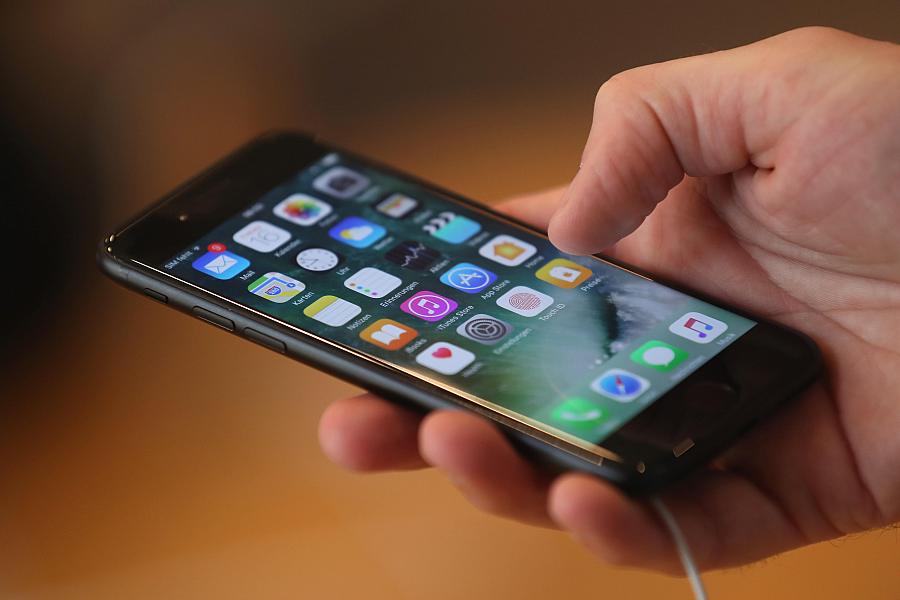Tech companies want to change how we check in at the doctor’s office

Photo: Sean Gallup/Getty Images
With computers and iPhones managing every detail of our daily lives, eliminating Rolodexes, paper maps, letters, and CD players, the lack of technology in some aspects of health care is puzzling. Esteemed medical centers still use paper forms for patient check-in and medical history collection, for example. Now, several legacy companies and startups are seeking to speed up those routine tasks.
Here are some of the more notable players in the game:
Los Angeles-based Darla Brown, a web designer and cancer survivor, and Emily Liu, a family medicine physician at the University of California, San Francisco, founded Intake.me. The service is aimed at patients who want to organize all of their health care data and share it with their doctors — the goal is to avoid yet another five-page form and the struggle to remember which aunt had breast cancer.
The company has a strong patient-first progressive bent, rallying patients around preservation of the Affordable Care Act on Facebook and offering “e-patient” courses on its website as a primer for navigating the formidable health care system.
Gliimpse, founded by Silicon Valley serial entrepreneur Anil Sethi, is also a patient health record (the company was recently acquired by Apple). At the popular Health 2.0 conference, Gliimpse impressed the audience with its simple downloading of lab results across multiple hospitals and health systems. Patients logged in with their UCLA or Massachusetts General credentials, for example, and results from different time periods and different hospitals lined up neatly on the screen. One could have been treated at hospitals across the country and still have a chronological record and graph of one’s blood sugar or hemoglobin levels.
PicnicHealth, the brainchild of autoimmune disease patient Noga Leviner, offers the luxurious service of doing all the administrative legwork to get patients’ medical records in one place — meaning the faxing, calling, and pleading with various doctor’s offices is handled with a single authorization form the patient signs. Picnic then sends this form to offices to request records. Like Gliimpse, Picnic can aggregate and graph disparate lab results and facilitate logging in to different hospital or clinic patient portals. Picnic also collects the paper records that can’t be obtained through an electronic patient portal (this is especially useful for patients with doctors who opted to retire rather than switch to electronic health records). Patients can view their CT and MRI scans, as well as doctors’ consultation notes, online.
Microsoft HealthVault was an early player in this space, and aims to be all things health — a personal health record and a collector of data from apps, FitBits, and other health-related devices. HeadsupHealth, founded by health-conscious tech professionals in Boston, aims squarely for the self-measurement fanatics, with offerings similar to HealthVault’s. The company’s current user base skews towards athletes and loyal FitBit wearers. (Full disclosure: One of my friends is a medical advisor to the company.)
The app My Medical boasts that it’s a “digital file cabinet” that is more secure because data is stored on the device, not on any server. Like the other apps, patients can electronically send their records to new doctors and scan in paper records. A nice feature is the ability to photograph pills so that an image shows up next to a medication — great for elderly parents.
Prime, a San Francisco-based company, had deployed a mobile app to manage medical records in 2014, and claimed to have captured data from over 50,000 people. However, at the time of this writing, Prime’s website was down and its iOS application couldn’t be located during a search, so the status of the company may be uncertain.
Of course, if most of a patient’s records are with, say, Cedars-Sinai, it may be satisfactory for a patient to use the in-house personal health record, like Epic’s MyChart app. But some of the newer apps may offer more functionality, and MyChart doesn’t show physician notes.
Tech-savvy patients and family members will get the most out of the unique features of these services. But patients can also help themselves by showing doctors their data and asking for the doctor’s opinion. Seeing information organized in a new way can often lead to new clinical insights. In the future, look for more and more patients to find more complete medical histories at their fingertips — and that means less time spent filling out those endless paper forms at the doctor’s office.
